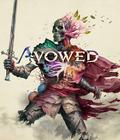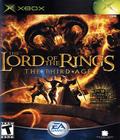Buy 'LOTR: The Third Age':
Xbox | GameCube | GBA | PlayStation 2
Lord of the Rings: The Third Age is an RPG that parallels the storyline of the "Lord of the Rings" books and movies. The title takes minor liberties and deviates a bit from the original story to make for a cohesive gaming experience.
In The Third Age, the player controls a group of stalwart adventurers that shadows the fellowship of the ring throughout their quest, following to the end of the "Lord of the Rings" storyline. The party starts with Berethor, a Gondorian scout sent by Lord Denathor to contact Denathor’s son, Boromir. He is joined at the beginning of the story by Idrial, an elf from Lothlorien, and additional characters Elegost the Dunedain Ranger, Hadhod the Dwarf Warrior, and Morwen and Eadoen of the Rohirrim join the team in due course.
The party receives orders from Gandalf through the cutscenes via telepathy, and Gandalf sends them after the fellowship, to gather the Rohirrim, and other tasks vital in defeating Sauron. The group has to fight orcs, Uruk-Hai, goblins, evil men, Nazgul, and a Balrog of Morgoth. Berethor and crew must challenge Sarumon, Sauron, and anyone else who gets in their way. Remember, these guys are not fighting the war, they are the second stringers who take care of the all of the ancillary tasks, like aide Galdalf, fight the Balrog and the Witch-King of Agmar.
The feel of this RPG is best summed up by Penny Arcade, who said that it was like "Final Fantasy, without all of the angst." There certainly exist significant similarities between the two titles; the skills trees, leveling, the almost completely menu-driven gameplay, and even the "perfect mode" attacks will feel familiar to Final Fantasy veterans.
Controls for this game are divided into two sections: travel and combat. The travel controls are similar to any first- or third-person view game on the Xbox, like Halo or Fable. The thumbsticks control movement and direction, while the buttons switch characters, bring up menus, or perform actions like opening chests. The combat is controlled by menus in a turned-based style, where only three characters can be participating at a time. Occasionally, a special character like Gandalf will join the group in combat, upping the total number of combatants to four, but unlike the others, the special character cannot be traded out. Players can switch between the character whose turn it is and any character not actively participating in combat. If a character becomes incapacitated in combat, there is no ability to swap him out, so luckily, there are items that will revive the injured.
The characters gain experience by defeating enemies and achieving goals set throughout the game. Gain enough experience, and the character's skill will increase a level. Achieving certain goals will yield rewards for the character that is represented in the "Travel" mode of the game, typically the one leading the party.
Anyone familiar with an RPG should have no issues with the standard skills; skill progression comes from using a talent within a certain skill subset. For example, using a sword craft skill enough times will enable the next sword craft ability. The skills can only be used in combat and are of the standard groups: damage, group damage, buff, de-buff, and healing. These skills use up action points, which are regained by the use of some skills, items, or leveling up.
The characters can receive both consumable and non-consumable items throughout their adventures. The consumable items are the standard buff, de-buff, and recovery time items, named after things that sound like they come from the story, like a longbottom leaf. The non-consumable items are the standard fare of equipment: weapons, armor, and jewelry. Some items can be used by any character, but most items are specific to a certain character (i.e., no character besides Hadhod can wear the Dwarven armor).
There are several other features to the game, most notably the "evil mode," which allows for the player to fight each major combat section of an area from the perspective of the bad guys. Winning all the fights in evil mode unlocks equipment for the party in the normal campaign.
Graphically, this game is amazing, especially in high definition. Add in the cutscenes done with captions of the movie, and it makes for an amazing experience. The level layouts are similar to those in Fable, and the player is limited by paths that have been cut through a level. The backgrounds are simplistic, but the character design and special effects are stunning.
There are two types of cutscenes, those taken from the movies and scenes modeled by the game engine. The engine-rendered scenes cover any action which requires the main characters to be present. The movie-based scenes are rehashed cinematic footage that will be familiar to people who have seen the movies, with the voice of Gandalf dubbed over the soundtrack. These movie-based scenes can be reviewed at anytime from an in-game menu.
The audio effects and music are also of high quality, having their roots in the movies. When Idrial casts an effect called "Loudwater Fury," the sound of rushing water streaks across the room in surround sound. The music is either from or inspired by the movies, each bit of action scored perfectly to enhance, but not take away from, the gameplay.
While not immense, the replayability is significant due to increases in difficulty level and the sheer size of the game. Add to it the existence of evil mode, and there are quite a few bits involved. The story will not change after the game is over, but it does take a significant amount of time to complete, so don't expect this one to be a quick weekend rental.
The Third Age is a wonderful, solid title hailing from the land of Middle-Earth. It is perfect for a fan of the "Lord of the Rings" movies and for aficionados of the RPG genre. I would not recommend this game for anyone under the age of 14 due to the complexity of the title, but it depends on the particular child.
Score: 8.2/10
More articles about The Lord of the Rings: The Third Age












 Experience the first console RPG set in The Lord of the Rings universe in The Lord of the Rings: The Third Age. Travel in the wake of the Fellowship in a unique structure that allows players to explore their own path while periodically intersecting the major events of the film trilogy.
Experience the first console RPG set in The Lord of the Rings universe in The Lord of the Rings: The Third Age. Travel in the wake of the Fellowship in a unique structure that allows players to explore their own path while periodically intersecting the major events of the film trilogy.


































